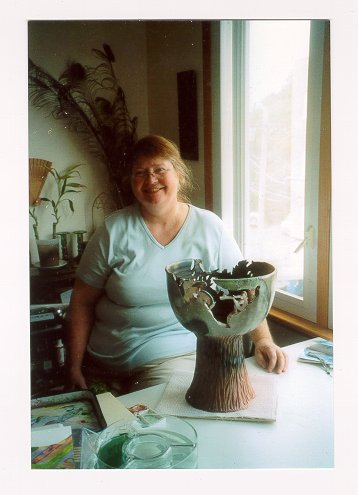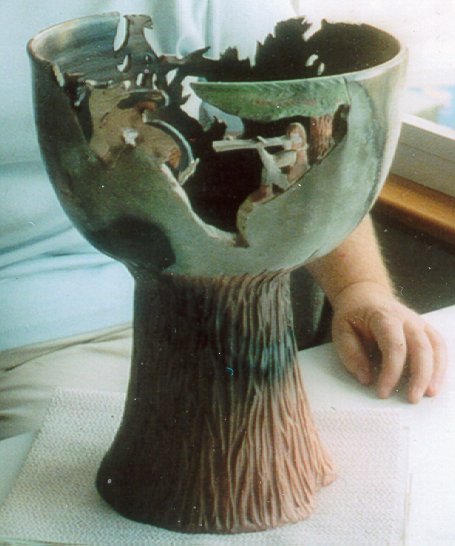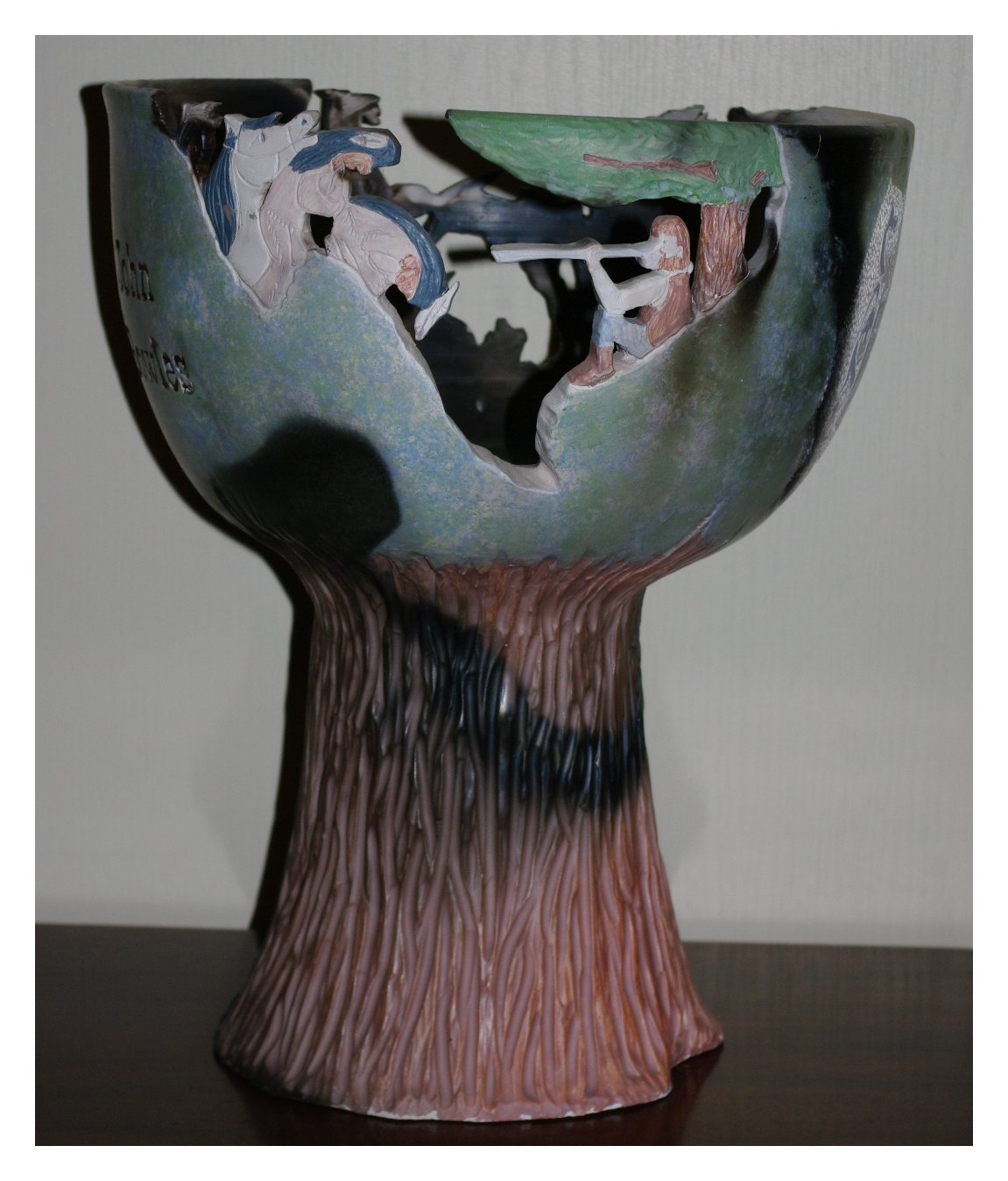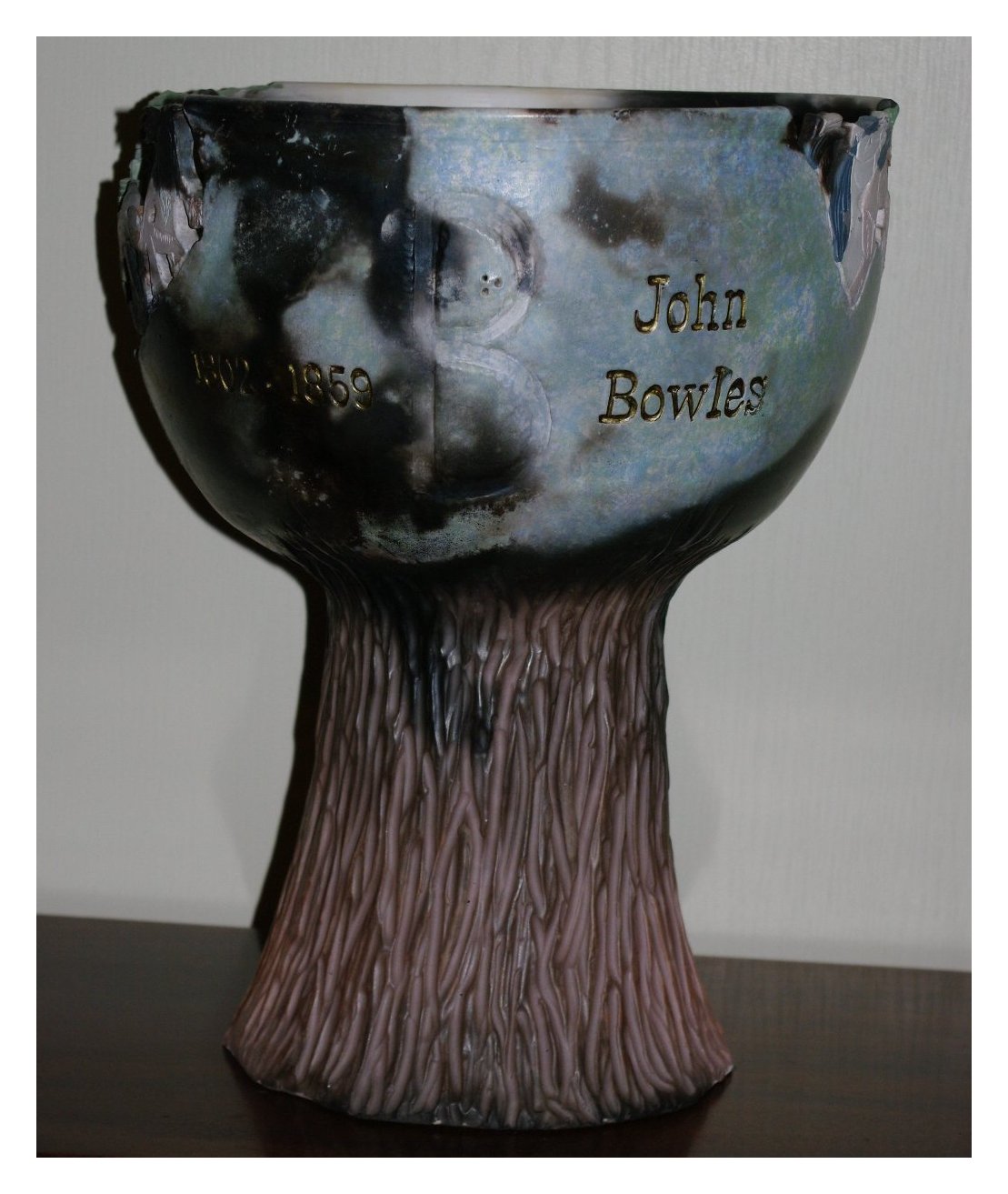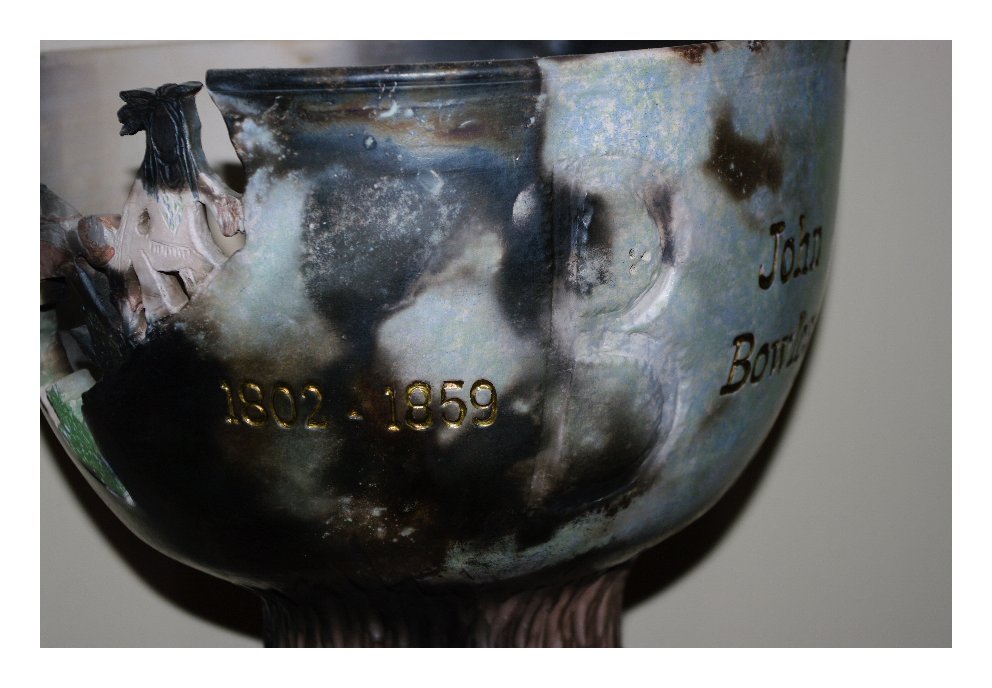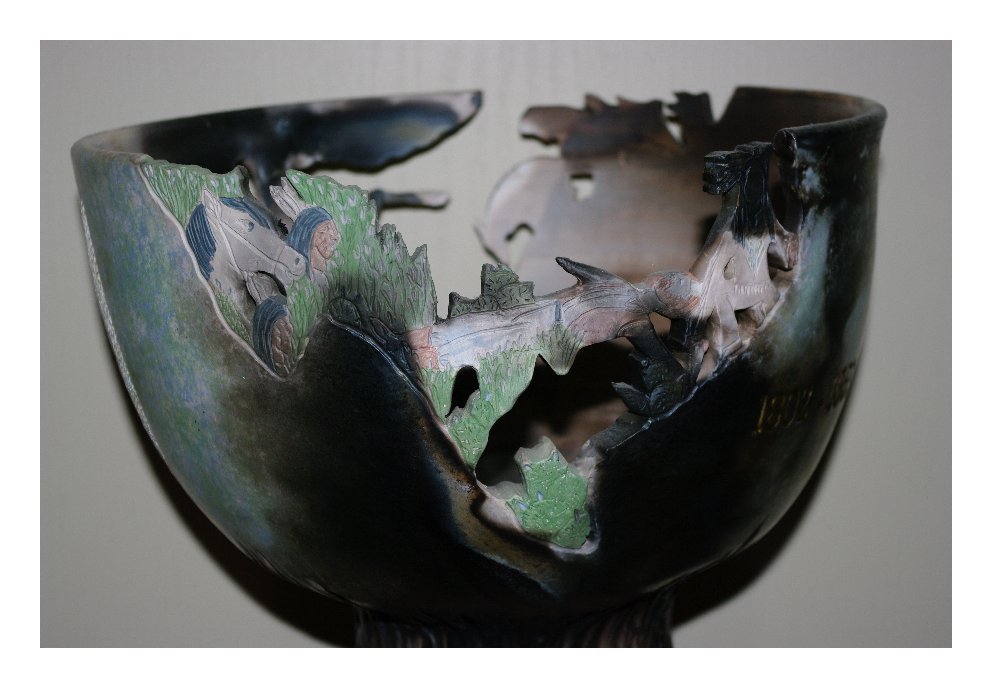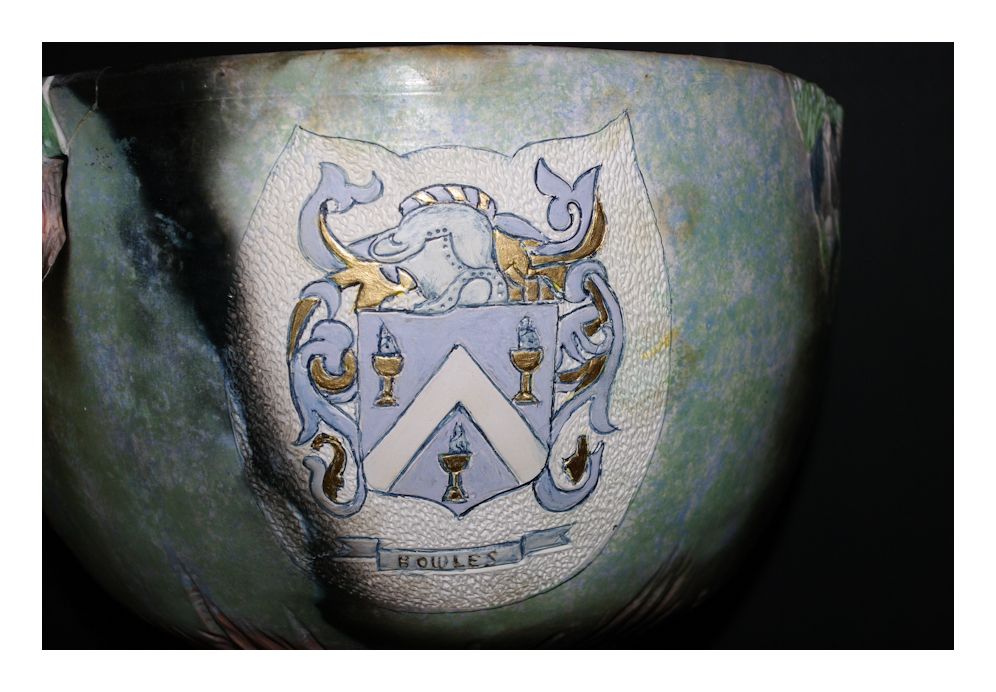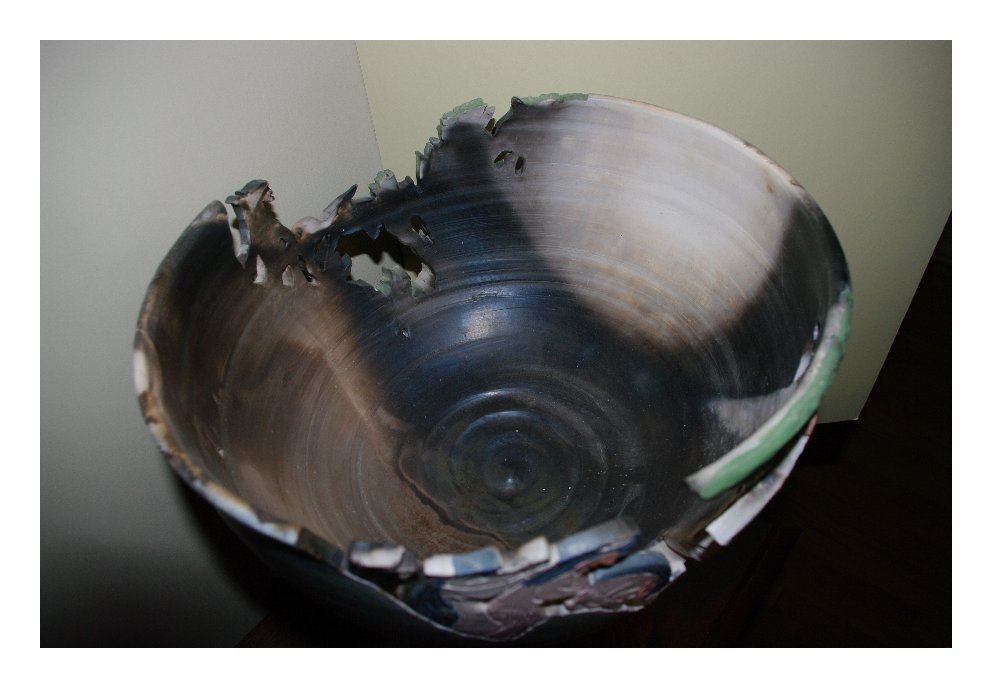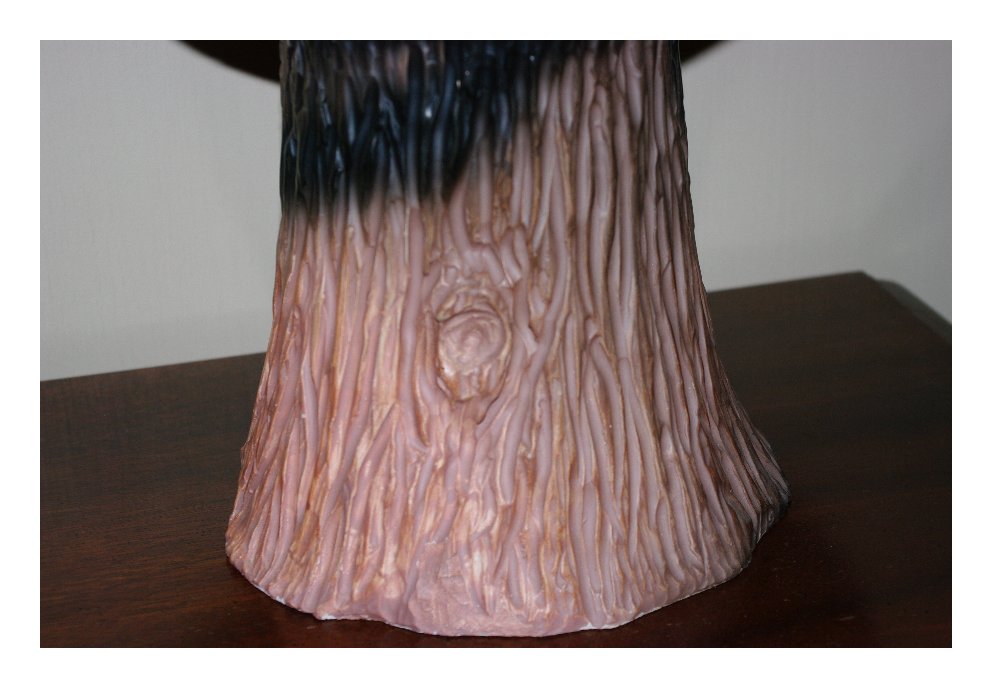THE BOWLES BOWL
John Bowles (1802-1859) was my
great-great-great-grandfather. A
professional Indian fighter in the Old West, he and his family -- a
wife and 13 children -- traveled to Texas with the Patterson
clan.
John didn’t approve of foul language, nor allow
his sons to speak in that manner, especially in front of their
mother.
The worst thing people heard him say was, “Well,
hog my cats,” so his descendants refer to him as
John “Hog My Cats”
Bowles. As it happened, he was killed on a mountain that looked
like an upside bowl.
Since the name “Bowles” means pot-maker, I chose clay
as the medium, and because I wanted to capture a lot of
detail in the carving, I chose porcelain because of its fine texture.
There are two stories depicted on the bowl. One
night, the Bowles family was having a party, and had not posted a guard
for the horses. John heard a commotion outside, and told his sons
to
continue playing the fiddle while he went with his gun to
investigate.
He hid under a tree while three Indians tried to steal their
horses.
Bowles fired his rifle, and all three Indians and a horse were hit with
one shot!
The other story recounts how John was killed by three Indians. He
was
shot in the heart with three arrows which hit less than an inch apart,
and was then scalped. One of his sons led a group of men who
chased
those Indians over the course of several days. When the sons
killed
the Indians, one of them had John’s scalp, along
with scalps of three children.
These two stories are carved into the bowl, one on
each
side, and each within the shape of the lower part of the state of Texas
since that is where the stories took place. The tales
are found in Texas Indian Fighters,
written in the late 1880s by A.J. Sowell, a Texas Ranger. There
is a detailed description of the Indian who had John’s scalp, as well
as the vegetation in the area. I also found a picture of one of
John’s
descendants holding the gun used in the story, and the leather vest he
was wearing when he died is in a small museum in Bell County,
Texas.
Besides these stories, John had a cattle brand -- a simple “B”
-- which is carved into the bowl. It was the second cattle brand
issued in Bell County. There are three holes in the “B”
approximately
where his heart would be if it was a human figure, representing the
three
arrows that killed him. The Bowles crest was carved into that
side.
His name and dates are carved into the remaining side, and it was
filled in with gold ink after the piece was pit-fired.
The sculpture is made out of porcelain, and is 12” in diameter and 14”
tall. The bowl portion was thrown on the potter’s wheel, and the
base
was handbuilt and carved like a tree trunk. Underneath John’s
death
scene is carved a broken branch to symbolize his death. The
entire
piece was kept covered with plastic for 6 weeks, to dry it completely
so as to avoid cracks or warping. When it was completely dry, I
burnished terra sigallatta on the piece. Three coats of white
went on
the entire bowl, and then three coats of color went on top of
that.
Where I wanted the piece to have more highlight, there is more
burnish. There are no glazes on this piece.
After the carving was finished, the piece was bisque fired at “Cone
05”,
and then it was pit-fired. I put wet clay over the two stories to
mask
those sections from the smoke effect. The bowl was placed on a
bed of
sawdust in a large pit in the ground, and then covered with more
sawdust. Two large bags of sawdust were used, and a bag of hay
was
placed on top of that. A number of logs went on top, and then a
fire
was started with small dry twigs. The roaring fire lasted for
about 45
minutes, and then the pit was covered with a piece of corrugated
tin.
The fire went out and the artwork smoked for about nine hours. I
was
thrilled that there wasn’t even a hair fracture on the piece because
the process is very unpredictable, but that is what is so beautiful
about it -- much like life.
Besides the creation of the artwork, the family tradition of
storytelling moves forward in yet another format.
|
